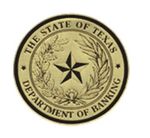FDIC Money Smart for Young People Banking on Kids - Texas Department of Banking Financial Education Webinar
←
→
Page content transcription
If your browser does not render page correctly, please read the page content below
Texas Department of Banking
Financial Education Webinar
FDIC Money Smart
for Young People
Banking on Kids
Leilani Lim‐Villegas
Financial Education Coordinator
Texas Department of BankingNEW! Money
Smart for
Young People
Texas Department of Banking
Financial Education Webinar
Thursday May 28, 2015
Presented by: Linda Gabriel,
Community Affairs Specialist
Federal Deposit Insurance Corporation
Dallas Regional OfficeNEW! Money
Smart for
Young People
Federal Deposit Insurance Corporation (FDIC)
launched Money Smart for Young People on
April 23, 2015
A series of lesson plans for teachers and new
resources for parents to help them teach
children about managing money.NEW! Money
Smart for
Young People
The free resources are designed to improve
financial education decision making skills among
young people from pre-K through age 20.
The FDIC worked in partnership with the
Consumer Financial Protection Bureau(CFPB) to
develop these education tools.NEW! Money
Smart for
Young People
The FDIC new series features four curricula
tailored for different age groups and abilities.
The fours series are:
Pre K-2
Grades 3-5
Grades 6-8 and
Grades 9-12NEW! Money
Smart for
Young People
Each curriculum consists of multiple lessons that offer
instructors:
Ideas on how to integrate financial education instruction into
subjects such as Math, English, and Social studies.
Special features of each curriculum are:
Multiple lessons that can be taught alone or in combination,
Ideas for grade-level modification,NEW! Money
Smart for
Young People
Real-life exercises and examples, and
Suggestions for optional books or online
games/tools that can reinforce student
understanding.
Teachers can access this curriculum and videos that
demonstrate how financial education concepts can be
taught in the classroom at www.fdic.gov/teachers.NEW! Money
Smart for
Young People
The Parent/Caregiver Guides for each curriculum offers exercises,
activities, and conversation-starters on different financial topics,
such as:
saving, setting financial goals, prioritizing spending
decisions, and staying safe online.
The guides are available through
www.consumerfinance.gov/parents,
A website developed by the FDIC and CFPB.
The teacher and parent resources are the latest step by the FDIC
and CFPB to strengthen financial education and promote economic
inclusion.NEW! Money
Smart for
Young People
Money Smart materials are available for
instructors to teach or for consumers to
learn online.
To learn more about the FDIC's Money Smart
curriculum, please visit us at
https://www.fdic.gov/consumers/consumer/m
oneysmart/.NEW! Money
Smart for
Young People
I also wanted to take this opportunity to make sure
everyone is aware that we available
Money Smart for Older Adults
Money Smart for Small Business
Money Smart for Adults
Money Smart for All Ages MP3 (Audio) VersionNEW! Money
Smart for
Young People
We are making some tweaks to the Money Smart page to
ensure everyone gets to the right page depending on what
product they are ordering.
This change has no impact on Money Smart for Older Adults,
Money Smart for Young People, and Money Smart for
Elementary Students (the coloring/activity book).
Those are available for immediate download through the FDIC
website and are not available on CD.NEW! Money
Smart for
Young People
CFPB and FDIC are working together to help
young people in America build skills for
making financial decisions.
We believe financial education has the
power to help children and youth achieve
their own financial goals throughout their
lives.Lou Garino National Account Director National Account Director for Banking On Kids with the Campaign for Financial Literacy in America Business Talk Radio Host, Bloomberg Radio on Business 1110 AM KTEK on The Wall Street Journal Radio Network Author, Fear and Loathing: Voting in America – an Apathy to Action Approach
Current Situation in America Average 50 year old has only about $2000 in savings. 45% of working households have no savings even when they have a bank. –National Institute on Retirement Security Houston, Texas – 40% of people are unbanked or underbanked, one of the highest areas in the nation.
By 2020, Millennials, one of the
“ largest generations in history, will
be dominating the work place and
shaping consumerism.
Future of Finance report by
Goldman Sachs
”
Millennials are more prone to use non-financial institutions
– like Apple Pay or Snap Cash.
71% feel relationship is transactional not relation driven.
33% do not think they will need a bank in the next 5 years.
33% are open to switching bank in 3 months.
71% would rather go to the dentist than listen to what banks have
to say.Why Student-Run-Banks?
Banking On Kids is not a marketing campaign for
adults; it is a foundation program, to build up the
future.
The time is NOW! Real not Pretend Lessons
When should kids start The majority of children today never receive
learning about money? money management coursework during any
When they are old enough to level of schooling, including college. –NFEC
count, around 2 or 3 years
old.
Hands-on best for teaching kids money smarts. –
Ages 8 to 14 are critical TAL
times in the development of
children’s financial behavior.
–National Financial Establish an In-School Bank
Educators Council (NFEC)
State-chartered banks are encouraged to initiate
Kids’ money habits are in-school banking programs. Fees are waived
formed by age 7. – and locations will not be deemed a “branch.”
University of Cambridge -Texas Department of Banking
reportBuild brand loyalty with the
next generation of
Americans.
Lifelong
Build for the future. Customers
Kids as young as
kindergartners make weekly
deposits.
All student accounts transfer
from School Bank to
Sponsoring Bank and start
earning interest when they
reach $10.00 in savings.
Grow strong communities
with smart citizens and
conscious consumers.Spin off business. From automotive loans to home equity loans to mortgages, student’s parents open accounts in the Sponsoring Bank and develop life-long relationships. Build community with increased commerce and improvement.
Invest in neighborhoods
near your bank branches.
Invest in local neighborhoods near
bank branches and build bank
brand with student-run banks on
school campuses.
Community engagement brings
many great public relations
opportunities for bank recognition.
Banking On Kids establishes fiscal
responsibility at a very young age
and improves community
investment rating evaluations.Cost Per New Customer: The average elementary school enrollment is 500 students, including parents and guardians. This represents a cost to the Sponsoring Bank of less than $9.00 per new account.
Banking On Kids is a
Cost-effective, all-inclusive, turn-key
program that provides complete
establishment and management of
each student-run bank.
Banking On Kids runs the program year around on your bank’s behalf. You get all
the credit – just show up for the ribbon cuttings and start taking weekly deposits!
All signage, materials and supplies with bank and school
logos.
Materials renewed annually with new student packages.
Teachers choice of the best financial literacy curriculums.
Awards of Appreciation to your bank from schools.
Your bank promoted by Campaign for Financial Literacy in
America.
2015 Public Relations Excellence Awards for Financial Literacy
Awareness Entry.No additional fees, no staff needed, no training hours…
Banking On Kids is a complete package with
year around benefits.
Your Banking On Kids Manager will work with schools
year around to establish and manage the student-run
bank on each school campus near your bank branch
offices.
Press releases distributed by Wicked Publicity to local
and national media.
GRAND OPENING Events with banners, balloons, food
and promotion for local media at each student run bank.
Ceremony photos released to press and promoted.
Year around radio and other media opportunities for bank
representatives.Great way for smaller
banks to quickly gain
market share.
Year around Campaign radio interviews on
Business Newsmakers Radio.
Audio link for each radio segment to post on
websites.
Bank featured on campaign websites and
promoted Nationally as part of campaign to
promote financial literacy awareness.Get Started Now…
All Inclusive Fee
for establishment and yearly management of each
student-run bank, including year around
promotional opportunities.
Go to bankingonkids.us and sign up.
Pay one time set up fee $4200:
Half at sign up, balance at school match.
Multiple-school discounts!
Renew supplies annually $1800.
“Perhaps there is no better future than one you can
bank on!”
Mike Anderson Ch. 2 News MilwaukeeQuestion and Answer Session
Download Copy of Presentation
www.dob.texas.gov/financial-educationContact Information
Leilani Lim-Villegas
Financial Education Coordinator
Texas Department of Banking
Leilani.lim-villegas@dob.texas.gov
Linda Gabriel
Community Affairs Specialist
FDIC
lgabriel@fdic.gov
(972) 761-2809
Lou Garino
National Account Director
Banking On Kids
lgarino3@gmail.com
(832) 885-9848You can also read



























































